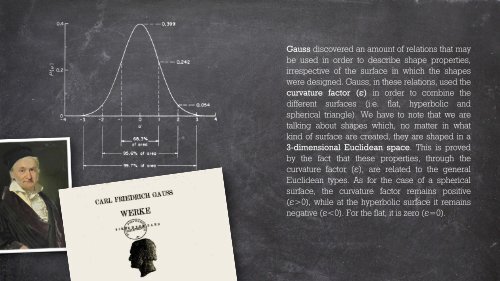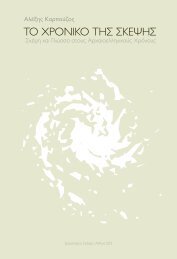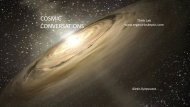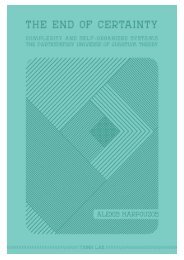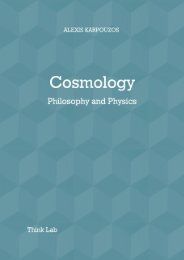THE 4TH DIMENSION IN ART AND SCIENCE - ALEXIS KARPOUZOS
A visual narrative of the relationship between science and art during the 20th century
A visual narrative of the relationship between science and art during the 20th century
Create successful ePaper yourself
Turn your PDF publications into a flip-book with our unique Google optimized e-Paper software.
Gauss discovered an amount of relations that may<br />
be used in order to describe shape properties,<br />
irrespective of the surface in which the shapes<br />
were designed. Gauss, in these relations, used the<br />
curvature factor (ε) in order to combine the<br />
different surfaces (i.e. flat, hyperbolic and<br />
spherical triangle). We have to note that we are<br />
talking about shapes which, no matter in what<br />
kind of surface are created, they are shaped in a<br />
3-dimensional Euclidean space. This is proved<br />
by the fact that these properties, through the<br />
curvature factor (ε), are related to the general<br />
Euclidean types. As for the case of a spherical<br />
surface, the curvature factor remains positive<br />
(ε>0), while at the hyperbolic surface it remains<br />
negative (ε


